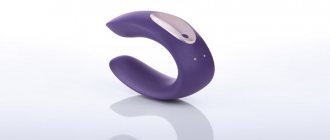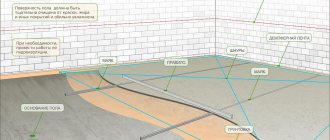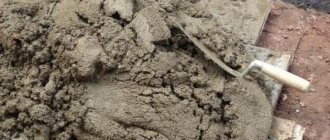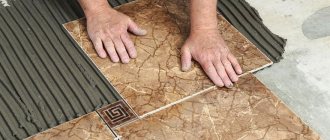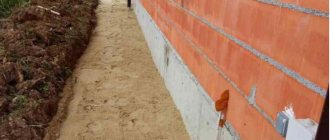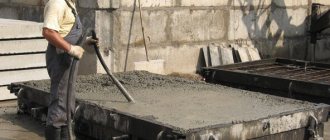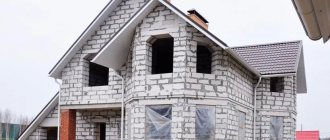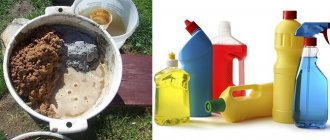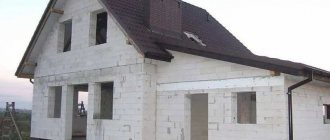Cement provides high strength and frost resistance, gypsum provides rapid strength gain. The option arises of mixing gypsum and cement and obtaining a high-strength binder with a rapid increase in strength. But it’s absolutely impossible to do this, and here’s why.
When mixing such a mixture with water (hydration), a reaction occurs between the aluminate components of clinker and semi-aqueous gypsum, which results in the formation of a high-sulfate form of calcium hydrosulfoaluminate - ettringite (another name for “cement bacillus”) . Ettringite (calcium hydrosulfoaluminate) greatly increases in volume during the process of gaining strength (hydration) and literally “tears” the cement stone.
That is why if you simply mix semi-aqueous gypsum with cement, after a short period of time the concrete based on such a complex binder (cement-gypsum) will simply collapse due to the development of the “cement bacillus” (formation and hydration of ettringite).
To prevent the formation of ettringite, it is necessary to add pozzolanic additives of natural (tripoli, opoka, diatomite) or artificial origin (acid blast furnace slag) to the gypsum + cement composition. The mechanism of action of pozzolanic (hydraulic) additives containing silica in active form is to reduce the concentration of calcium hydroxide in the gypsum-cement system, which allows almost completely avoiding the formation of ettringite (“cement bacillus”).
As a result, we get gypsum-cement-pozzolanic binder GCPV . Based on HCPV, it is possible to produce concrete with a strength of 15-40 MPa with frost resistance of 25-300 cycles and above. Modern GCPVs contain a set of binders, pozzolanic, plasticizing, thresholding and other additives and fillers carefully selected in terms of their quantitative composition. Such mixtures (for example, Stonemaker) make it possible to produce stone that hardens in less than 60 minutes and has a final strength of up to 40 MPa and frost resistance of up to 300 cycles, which allows it to be successfully used for the production of artificial stone for facade finishing.
If you do not want to deal with the preparation of GCPV yourself, with the risk of the formation of a “cement bacillus” and possible destruction of the stone, you can increase the strength of ordinary gypsum almost 10 times by using a special additive - gypsum strength activator SVV-500. This gypsum additive at a low consumption (up to 5% of the gypsum weight) allows you to increase the strength of the finished gypsum stone by an order of magnitude. You can also use the polycarboxylate hyperplasticizer MasterGlenium-115, which reduces the amount of mixing water by 35-40% (with the same fluidity of the mixture), which increases the strength of products made from such gypsum several times.
Example of a ready-to-use HCPV mixture:
— a mixture for the production of facade stone “Kamnedel facade”. This product can be purchased for the manufacture of decorative stone for facade cladding. It gains unmolding strength in 1 hour, but at the same time has frost resistance of 300 cycles and strength (40 MPa) comparable to the strength of cement-based stone.
— mixture for the production of decorative stone “Kamnedel Decor” (premium). We recommend it in the production of decorative stone for interior decoration. It gains unmolding strength in 40 minutes, providing a strength of at least 25 MPa.
Cement serves as the basis for creating a wide range of mortars intended for installation and finishing work. Gypsum is also used for the production of building mixtures, primarily plaster.
Cement mortars take a long time to gain strength, and gypsum hardens quickly, so there is a great temptation to mix these binders to obtain a composition that is convenient for installation. Let's figure out whether it is possible to mix gypsum with cement.
Use of gypsum for cement production
Cement is a multicomponent material, which includes:
- clayey rocks (loam, clay, shale, loess or loess-like loams);
- mineral rocks of the carbonate group (calcite, dolomite, limestone, chalk, marl).
If we consider the chemical composition of cement, it contains oxides of aluminum, silicon, magnesium, iron, and calcium.
During the production of cement, natural materials are dried, ground and mixed, after which the mixture is heated to high temperatures. The resulting clinker is ground again - the powder should be fine. Then various modifier additives are introduced to give the material certain properties.
Gypsum is added to all types of cement mixture to prevent rapid setting of the solution - this allows the material, ready for use, to be transported over the required distances. In addition, gypsum adds strength to the solution. The percentage of gypsum in cement is strictly defined - the volume of the additive is 3-6%, no more.
Is it possible to add PVA glue to gypsum plaster?
You are using an outdated browser. This and other sites may not display correctly. You need to update your browser or try using a different one.
Used for gluing decorative elements made of ceramics, stone or other mineral materials to heated surfaces. Recommended for masonry, cladding, putty, grouting and repairing stoves, boilers, fireplaces and sealing cracks in chimneys. The mastic is resistant to water and temperatures up to +1300°C. Excellent adhesion, high elasticity, ease of use, low consumption.
Ettringite or "cement bacillus"
Is it possible to mix gypsum with cement to obtain a universal solution that can be applied in a thick layer and allows you to level a surface with noticeable defects in one go? Despite the fact that this approach is practiced by unscrupulous private craftsmen, adding gypsum or alabaster to the cement-sand mixture is strictly not recommended.
The aluminate components of cement react with gypsum when mixed with water, resulting in the formation of calcium hydrosulfoaluminate - ettringite. In ancient times, the appearance of ettringite was called “cement bacillus” - as the crystals gain strength, they greatly increase in volume and destroy the cement stone; it is impossible to resist this process.
Hydration (addition of water molecules) occurs not only during the preparation of the solution, but also under the influence of moisture on the material - for example, if the walls are plastered with a cement-gypsum mixture in a room with a high level of humidity or in the open air.
Proportions for plastering walls: binder
Today you can see many different options for plaster mortar on the market. To choose the optimal composition, you need to know everything about the types of plaster mixtures.
All builders who try to keep up with the times, develop and improve the level of their work know that the mixture must consist of an aggregate and a binder component. When it comes to plastering, the classic filler in the proportion of cement for plastering walls is sand. This is an essential component that prevents cracks from occurring and makes the material durable.
Clay, lime, cement or gypsum powder is mixed into the composition as a binding component of the plaster solution.
Cement mixtures are most often used for external finishing work, since the external part is exposed to atmospheric influences and various weather phenomena. Indoors, cement is used to plaster the bathroom or kitchen - places with high humidity levels.
Sad consequences
Unscrupulous performers use a solution of cement and gypsum for rough plastering of surfaces - the mixture is well laid in a thick layer and hardens quickly. This allows you to increase the speed of finishing work many times over, since without gypsum the cement-sand mixture has to be applied to concrete walls in layers with intermediate drying for several hours.
However, such plaster very quickly, within one to five days, becomes covered with a dense network of microcracks. If the material is applied to a red brick wall indoors, then the situation can be saved by a finishing layer of cement mortar without plaster or façade putty. In the case of concrete walls, this technology will not bring results.
Gypsum added to a cement-sand mortar sets quickly - the plaster becomes hard a few minutes after application, but it takes much longer to dry and is at the same time exposed to the “cement bacillus” due to the chemical reaction that occurs.
As a result, a plaster layer made from a mixture of gypsum and cement inside a dry room can last up to 5 years without collapsing, but on the façade of a building it will become unusable after the first winter. If a metal mesh is used for reinforcement, it will quickly begin to rust, since the plaster absorbs moisture due to the introduction of gypsum. Traces of rust will appear on the surface of the plastered wall.
PVA in Rotband
Why is it recommended to add PVA to Rotband when sealing rust?
Asks Dmitry We will help you find a specialist for any repair
Masters online: 423 Orders per week: 1,560 Offers per day: 998
If we are talking about floor slabs, it won’t hurt, but you need to add serpyanka there. if it is gypsum board, use Uniflot with serpyanka.
We are talking specifically about the joints of floor slabs. The question is why and in what proportions?
And who recommends, if it’s not a secret? And how do they argue?
That’s why I ask because the source of information is distrustful.
Generally speaking, adding PVA to solutions (more precisely, PVA is added to the mixing water) increases strength. What kind of rust sealing technology do they offer?
Cleaning rust, PVA primer, Rotband plaster with PVA, pasting with reinforced mesh, Rotband putty. Something like this.
What option can be offered as an alternative?
In any case, the seams will crack sooner or later, no matter what material they are covered with. The only way out is fiberglass or non-woven fabric over the entire surface of the ceiling. The mesh won't help.
At my home I took serpyanka, soaked it in alibastrum, sealed the joints and then covered it up, it lasts for 10 years.
Is it crazy to recommend priming with PVA? There are many primers for different tasks. You have a strong, but smooth and non-absorbent base - then you need Betokontakt (this is an adhesive primer for gypsum-based plasters, including Rotband). Do you need to strengthen a weak, chalking substrate? A deep penetration primer is needed (but you must follow the manufacturer's instructions written on the canister). It is necessary to remove dust from the surface to increase adhesion - you need putz primer, sometimes it is called universal. If the rust is “alive”, then it should be sealed not with hard materials, but rather with elastic ones. No Roband with PVA and a net will help here.
I realized that the roots of this technology grow from the Soviet past, when there were no specialized materials.
Application of gypsum-cement mixture
Before modifiers that could increase the adhesion of the solution began to be widely used, gypsum was added to the cement-sand mixture for plastering ceilings and upper slopes to simplify the work. As a result, it was necessary to regularly repair the ceilings, since after a few years the plaster could begin to fall off in pieces.
Cement and gypsum can be mixed to obtain an effective binder under one condition - pozzolanic additives, which contain silica in active form, are introduced into the mixture. These can be materials of natural origin (opka, diatomite, tripoli) or artificial (acid blast furnace slag). Silica reduces the concentration of calcium hydroxide in the mixture, thereby preventing the formation of ettringite.
Gypsum-cement-pozzolanic binder (GPVC) is used for the production of concrete. When manufacturing it, it is important to carefully observe the proportions of the components in order to avoid the risk of damage to the material by the “cement bacillus”.
What you need to know to properly prepare a plaster solution
There are several technologies for treating walls and ceilings with plaster, but this article will focus on how to properly prepare a solution for plastering surfaces using the “wet method”. This technology can be applied in various solutions:
- one-component, otherwise they are called simple (this includes ready-made clay, cement or gypsum plaster);
- multicomponent, otherwise complex mortars (they can consist of lime and clay, lime and gypsum, or cement and lime).
No plaster mixture can be prepared without water and additional components, which are the binding link of the solution. In order for the finished mixture to have good strength and be elastic, when preparing the solution, it is necessary to maintain the correct proportions of each component.
Use of gypsum for cement production
Cement is a multicomponent material, which includes:
- clayey rocks (loam, clay, shale, loess or loess-like loams);
- mineral rocks of the carbonate group (calcite, dolomite, limestone, chalk, marl).
If we consider the chemical composition of cement, it contains oxides of aluminum, silicon, magnesium, iron, and calcium.
During the production of cement, natural materials are dried, ground and mixed, after which the mixture is heated to high temperatures. The resulting clinker is ground again - the powder should be fine. Then various modifier additives are introduced to give the material certain properties.
Gypsum is added to all types of cement mixture to prevent rapid setting of the solution - this allows the material, ready for use, to be transported over the required distances. In addition, gypsum adds strength to the solution. The percentage of gypsum in cement is strictly defined - the volume of the additive is 3-6%, no more.
Ettringite or "cement bacillus"
Is it possible to mix gypsum with cement to obtain a universal solution that can be applied in a thick layer and allows you to level a surface with noticeable defects in one go? Despite the fact that this approach is practiced by unscrupulous private craftsmen, adding gypsum or alabaster to the cement-sand mixture is strictly not recommended.
The aluminate components of cement react with gypsum when mixed with water, resulting in the formation of calcium hydrosulfoaluminate - ettringite. In ancient times, the appearance of ettringite was called “cement bacillus” - as the crystals gain strength, they greatly increase in volume and destroy the cement stone; it is impossible to resist this process.
Hydration (addition of water molecules) occurs not only during the preparation of the solution, but also under the influence of moisture on the material - for example, if the walls are plastered with a cement-gypsum mixture in a room with a high level of humidity or in the open air.
How to choose artificial stone
The stone can be selected in two ways:
Method one: Just see something beautiful, incomprehensible, pleasant to the touch and buy.
Method two: decide what you need the stone for? and make an informed choice.
It's simple. If you want to make your home unique, then you need to use this criterion as a basis when choosing a facing stone. If you want to change the interior by spending a minimum of money - the same thing!
You shouldn't overpay an extra 30% for something you won't like. The final result does not depend on the cost of the stone, but on the desire to achieve the goal. Often, a budget stone, a flight of fancy and adherence to installation technology, lead to results worthy of publication in the best interior magazines.
Now about the essentials:
A stone, in addition to its main purpose, must have certain properties and characteristics. And it’s easier to choose a decorative stone if you have the necessary information:
1. Appearance of facing stone.
The front part should look natural. There should not be any visible defects: cracks, pores, scratches, brush marks, etc. In nature it is difficult to find two identical stones (or rather impossible). Therefore, if you want the stone to look natural, it is advisable that there are no repeating elements in 1 square meter.
2. The back side of the artificial stone.
It is on this that the stone will be mounted. Therefore, it should be strong, slightly rough and relatively smooth.
3. Decorative stone made of cement (concrete) or gypsum.
Gypsum is lighter and more brittle. Cement is heavier and more durable. - That's it in a nutshell.
Someone says that gypsum can be used for cladding facades, it is more durable than concrete, etc. We can say unequivocally that dams are made of concrete, not plaster.
All materials have pros and cons. Stone made from cement, in most cases, has an advantage over stone made from gypsum.
4. Corner element.
We can say the following - they should be there, but whether to purchase them or not is up to you or those who will install the decorative stone to decide. In most cases, a project made using corner elements looks more interesting, and the installation of stone is also simplified. Yes, still. . . corner elements are measured in linear meters and usually cost the same as a square meter of stone.
5. Color of artificial stone.
If we are talking about choosing a high-quality stone, then it must be colored in bulk (i.e., the entire composition) with iron oxide (iron oxide) pigment. This type of dye does not fade or fade, which will allow the product to be used for decades. If a stone (especially gypsum) is painted superficially, it will suffer greatly from light (ultraviolet radiation), scratches, abrasion, humidity, etc.
6. Packaging of decorative stone.
The stone must be neatly and conveniently packed. Depending on the final purpose, it can be packed in regular boxes or in plywood boxes (for large volumes and for ease of delivery). One way or another, the possibility of loss of properties during transportation of the stone must be excluded. Again, very often poor-quality gypsum stone suffers.
7. The versatility of the stone.
By purchasing a universal, high-quality product, you can be sure that it will last a long time. It is very convenient when facing stone can be used indoors and outdoors. And an extra margin of safety, for which you don’t have to pay extra, never hurts.
8. Related materials and services.
It is better to purchase artificial stone where it is possible to buy everything you need: stone, glue, grout, protective agents (waterproofing agents), order delivery and installation, if necessary. And also find out all the information on the product: how to install, operate, etc.
9. Paving stones and decorative elements.
Pillar caps, cornices, window surrounds, steps and many other elements complement each other perfectly in combination with facing stone. If the project includes paving stones (or paving slabs), then the project will be unique if it is made in the color of the decorative stone. An exact color match can only be achieved by ordering products from one manufacturer.
10. Feel and touch.
An almost necessary requirement when choosing a decorative stone is to see your future stone in person. Because the colors are not reflected correctly on the website or in the catalogue. He will either disappoint you or you will like him even more. The picture gives only a small idea of the product. And you will receive 100% only when all the work on installing the stone is completed. Having seen the stone in person, you will more clearly imagine the end result.
Sad consequences
Unscrupulous performers use a solution of cement and gypsum for rough plastering of surfaces - the mixture is well laid in a thick layer and hardens quickly. This allows you to increase the speed of finishing work many times over, since without gypsum the cement-sand mixture has to be applied to concrete walls in layers with intermediate drying for several hours.
However, such plaster very quickly, within one to five days, becomes covered with a dense network of microcracks. If the material is applied to a red brick wall indoors, then the situation can be saved by a finishing layer of cement mortar without plaster or façade putty. In the case of concrete walls, this technology will not bring results.
Gypsum added to a cement-sand mortar sets quickly - the plaster becomes hard a few minutes after application, but it takes much longer to dry and is at the same time exposed to the “cement bacillus” due to the chemical reaction that occurs.
As a result, a plaster layer made from a mixture of gypsum and cement inside a dry room can last up to 5 years without collapsing, but on the façade of a building it will become unusable after the first winter. If a metal mesh is used for reinforcement, it will quickly begin to rust, since the plaster absorbs moisture due to the introduction of gypsum. Traces of rust will appear on the surface of the plastered wall.
About the benefits and advantages of printed concrete
Decorative printed concrete appeared in the United States as an inexpensive artificial material for the design of runways. However, today the scope of its application is much wider - largely due to the low cost of raw materials and related products, simple installation technology, and the environmental integrity of the material.
Printed concrete today is used in the interior and exterior decoration of buildings (individual construction), is in demand and confidently competes with natural stone (paving slabs, facing slabs, paving stones) when multi-meter project sites are discussed (we are talking about the industrial purpose of concrete material).
Let us clarify: we are talking about a horizontal decorative coating with printed concrete.
Its advantages:
- A monolithic frozen mixture, by stamping, painting and polishing, brought to the original seamless multi-meter fabric, is much lighter and more practical than fairly heavy natural stone, which, among other things, must be glued every two to three years, and protective glue and corresponding to the palette must be applied to the joints of the seams. expensive stone putty.
- Printed concrete "Domask" is applicable in most projects. The frost-resistant material perfectly withstands temperature changes in the range from –50 to +50 ºС, and is non-toxic when heating and cooling. Stably resistant to ultraviolet radiation (100%!), the decorative coating will serve faithfully for at least fifteen years.
- Combinations of colors and stamp designs on the material are agreed upon with the customer. In this case, colors can change within the same project in the direction of strengthening or weakening.
Currently, it offers customers about 20 basic branded palettes and 20 branded textures (stamp forms made of polyurethane, color fixative - factory products). Any color and shape combinations are possible!
In the case of natural stone, everything is somewhat more complicated: a material created by nature with the presence of multidirectional veins and patterns does not guarantee a 100% match in tone, grain and color of the material.
Decorative concrete can be laid without any problems on most surfaces, such as gypsum, plaster, concrete, sand-lime brick, foam concrete, etc. Strong in compression, decorative concrete is at the same time quite plastic: for horizontal coverings such as paths or sidewalks made of concrete, concrete parking We offer curved radius borders.
Fire resistance, safety of the material, easy maintenance, minimal price tag for restoration services in case of vandalism - all of the above determines the buyer’s choice in favor of horizontal coating with decorative printed concrete.
Perfectly imitating the pattern and color of stone, brick, paving stones, stone chips, boulders, stone tiles, parquet boards, printed concrete is used today both in private suburban construction for final landscape work, and in large-scale reconstructions of socially significant city projects in Russia and foreign countries.
Palettes and textures allow you to fit into a project made in any style. The price is competitive. Therefore, Domask printed concrete is applicable almost everywhere (see objects in the Portfolio section).
We will provide high-quality decorative concrete coating at commercial and industrial construction sites:
- shopping areas, podiums, stages, false steps;
- garden paths;
- city squares, embankments;
- outdoor cafes, patios;
- parking lots, gas stations;
- transport routes;
- sea berths;
- road surfaces in recreation areas (hotels, inns, medical centers).
We will significantly reduce your costs in private construction if you choose Domask printed concrete for your installation:
- parking areas;
- sidewalk or pedestrian path;
- platforms, steps of the entrance group;
- garden path.
Application of gypsum-cement mixture
Before modifiers that could increase the adhesion of the solution began to be widely used, gypsum was added to the cement-sand mixture for plastering ceilings and upper slopes to simplify the work. As a result, it was necessary to regularly repair the ceilings, since after a few years the plaster could begin to fall off in pieces.
Cement and gypsum can be mixed to obtain an effective binder under one condition - pozzolanic additives, which contain silica in active form, are introduced into the mixture. These can be materials of natural origin (opka, diatomite, tripoli) or artificial (acid blast furnace slag). Silica reduces the concentration of calcium hydroxide in the mixture, thereby preventing the formation of ettringite.
Gypsum-cement-pozzolanic binder (GPVC) is used for the production of concrete. When manufacturing it, it is important to carefully observe the proportions of the components in order to avoid the risk of damage to the material by the “cement bacillus”.
Preparation of complex plaster solutions
The concept of “complex plaster mortars” includes compositions containing two or more binders: sand, as a rule, acts as a filler. By combining several components at once, the mixtures are given improved qualities. For example, the well-known lime mortar for plaster has a sufficient drying time. If you introduce gypsum into its composition, which dries very quickly, it is possible to achieve a noticeable reduction in the drying time of the finish, while maintaining all the qualities of strength and reliability. Most often you can find the following complex plaster solutions:
- cement-lime;
- lime-gypsum;
- clay-cement;
- clay-lime;
- clay-gypsum;
- cement-lime.
